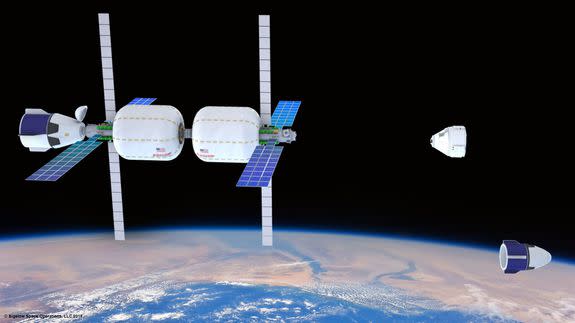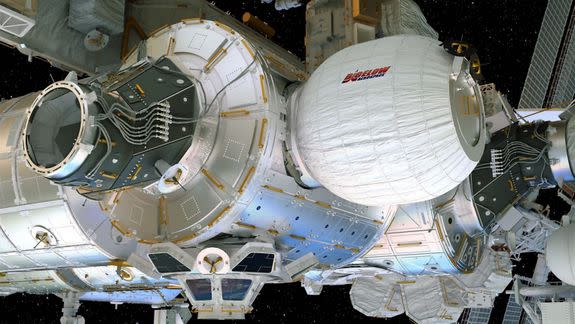Bigleow aims to launch its own expandable space station as NASA plans pullback from ISS

Bigelow Aerospace — which currently has an inflatable capsule attached to the International Space Station (ISS) — announced bold plans to populate low-Earth orbit with inflatable space capsules. The announcement on Tuesday comes soon after the Trump administration proposed a NASA budget that would cease funding the Space Station after the year 2024.
The company's CEO, Robert Bigelow — who is convinced aliens have visited Earth — announced the creation of a new company called Bigelow Space Operations, which will sell and manage the company's inflatable capsules.
Last week, NASA announced it will allow private companies to play a leading role in maintaining the massive, aging Space Station after 2024. Bigelow could potentially play a role in the upkeep and management of the station, or provide expandable platforms for a new station.
SEE ALSO: An astronaut and cosmonaut floated into the Space Station's first inflatable habitat today
Beyond the current capsule, called the Bigelow Expandable Activity Module, or BEAM, now loaded with Space Station gear, Bigelow said the company will launch two new capsules into space in 2021. The capsules, called B330, are designed to be self-sustaining, permanent structures that can be "ganged together" to form a larger station complex, Bigelow said in a call with reporters.
And if there's enough demand from various nations or companies to purchase Bigelow's expandable capsules — which are marketed as being lighter, substantially less bulky, and cheaper to launch than traditional metal capsules — Bigelow has even grander plans: A single new space station, with nearly two and a half times the volume of the current ISS, that would be launched on a single rocket and then unfurled in space. Such a product would weigh between 165,000 to 176,000 pounds on launch, Bigelow said.

Image: bigelow aerospace
For reference, when the SpaceX Falcon 9 rocket blasts its Dragon cargo spacecraft to the Space Station, its total weight maxes out at 13,228 pounds.
The looming question for Bigelow, however, is not if it can successfully build this inflatable technology. As the BEAM technology on the space station proves, it can. Instead, Bigelow is concerned about whether there will be demand for such low-Earth orbit technology.
Along with the announcement of the 2021 launch, Bigelow said he's now hiring for and funding a multi-million dollar study to determine "what the hell a commercial market really looks like," in the coming years. In Bigelow's view, no one really knows.
"The time is now to quantify in detail the global, national and corporate commercial space market for orbiting stations. This subject has had ambiguity for many years," a Bigelow statement reads.
But Bigelow is certain about two existential threats to the future of U.S. commercial space enterprise: China and NASA.
China, he noted, is "systematically" courting the world's nations to join the Chinese space station, set to begin launching into Earth's orbit sometime around 2020. If nations decide to join the Chinese, they may have no interest in Bigelow's products, or any potential partnerships with the ISS.
"That's a huge disadvantage that exists today," said Bigelow.

Image: nasa
The second threat, he said, comes from NASA, simply because the agency's new budget proposal focuses heavily on deeper space exploration, notably the moon and Mars.
"They may not have much money left in terms of being a customer for LEO [low-Earth orbit]," said Bigelow. "This is a political problem."
If NASA wants to hand-off operation of the Space Station to commercial partners, it needs to develop a coherent plan immediately, Bigelow said.
But, he notes, "I don’t see it being addressed."
Regardless of the uncertainty about the future demand for Earth-orbiting space outposts, Bigelow said his two capsules will be ready for launch in 2021. But before then, possibly by the end of the year, Bigelow will release the results of his commercial space study.
"We will make a conclusion and indicate whether the news is terrible, mediocre, or great," he said.
However dramatic, ambitious, and exciting Earth-orbiting technology might be to speak about and advertise, he emphasized there might simply be no money for it.
"Talk is easy," he said.
WATCH: Here’s how NASA is preparing the largest telescope ever built for space
